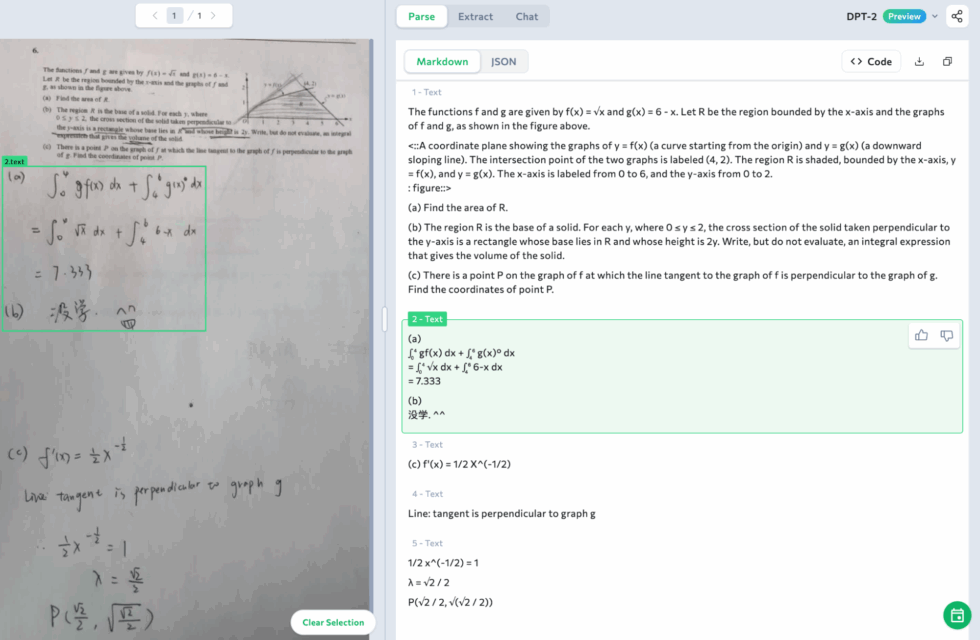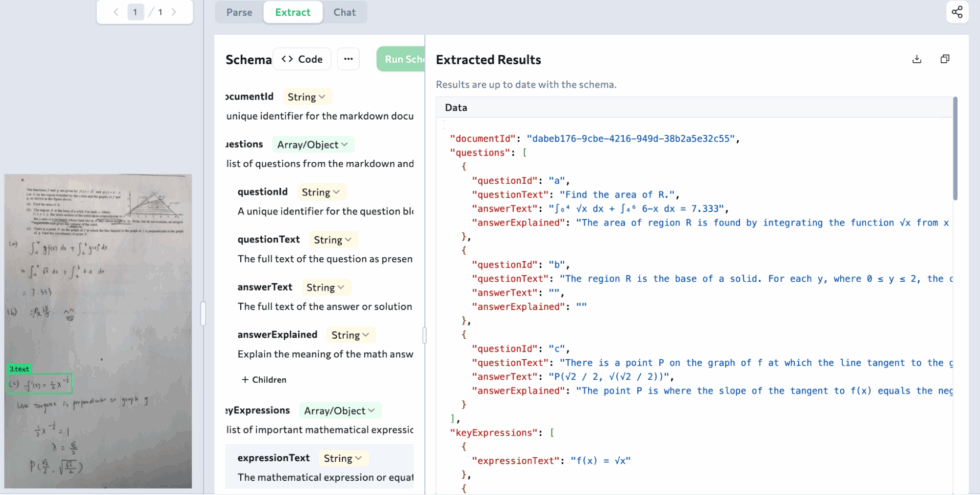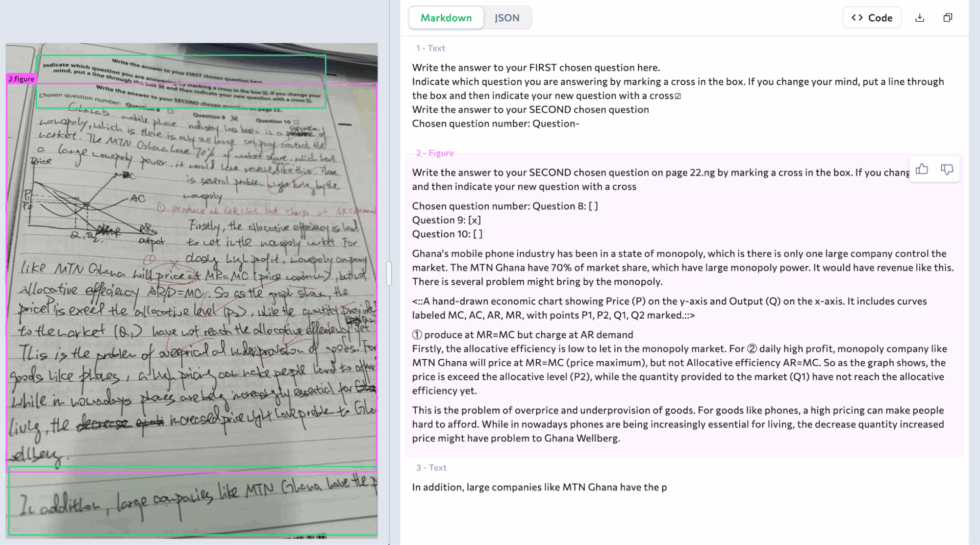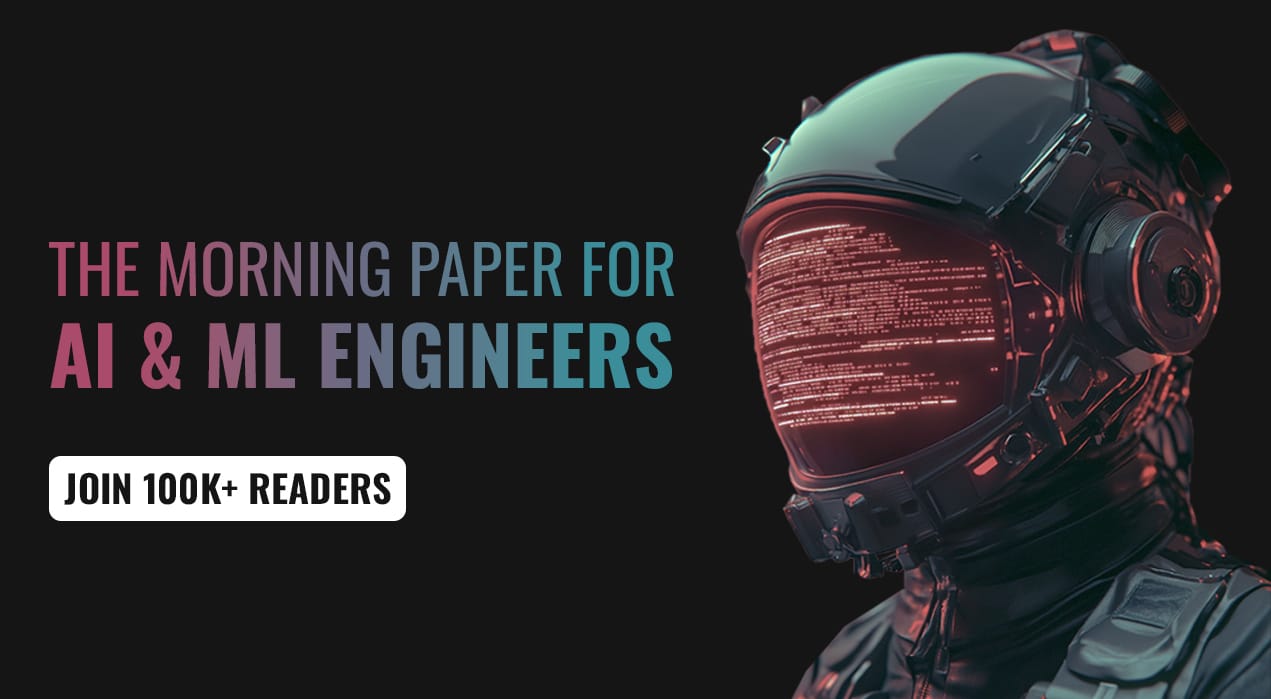TL;DR:
Landing AI just solved the handwriting problem that's been costing businesses $28,500 per employee annually. Their new Agentic Document Extraction (ADE) doesn't just read text—it understands documents like a human would, turning messy handwriting into perfectly structured data. One health insurer already saved $40 million using similar automation.
🎯 What happened: Landing AI (founded by AI pioneer Andrew Ng) released ADE, which uses vision-language intelligence to actually understand documents—reading handwriting, tables, and context together—not just matching character patterns like traditional OCR (Optical Character Recognition).
📈 Why it matters: Traditional OCR—the technology that tries to convert images of text into digital text—achieves only 64% accuracy on handwritten documents. It sees individual letters but misses meaning. ADE sees the whole document like humans do: understanding that "Hemoglobin: 12.5" is a lab result, not random text. This breakthrough tackles a $14.36 billion market where manual processing costs $15.97 per invoice vs. $1.77-$3 automated.
💰 The impact: ADE doesn't just digitize—it comprehends. It knows which data goes where, what it means, and how it connects. Companies see 8X ROI and 600% faster processing because the output is structured, verified, and ready for immediate use.
INTRODUCTION
The Document Problem Nobody Solved—Until Now
Every business has them: stacks of handwritten forms, field notes, medical records, and historical documents that need to be digitized. For decades, we've thrown technology at this problem, but traditional OCR (Optical Character Recognition) still achieves only 64% accuracy on handwritten text—compared to 99% on typed documents.

ADE's workflow: from handwritten document to structured JSON data. Source: Landing AI
The math is brutal. Manual data entry costs businesses $28,500 per employee annually. Knowledge workers spend 7-9 hours weekly searching through paper files. And when OCR fails, you're back to typing everything manually.
But the real problem isn't the technology—it's the approach. Traditional OCR tries to match character patterns, like a computer from the 1980s. It sees individual letters but misses the context. It can read "Hemoglobin" and "12.5" as separate text but doesn't understand they're connected as a lab result.
Landing AI, founded by Andrew Ng (who built Google Brain and has taught 8 million people AI through his courses), took a completely different approach. Their Agentic Document Extraction (ADE) uses vision-language intelligence to understand documents the way humans do—seeing not just text, but layouts, relationships, and meaning.
THE NUMBERS
Numbers You Can't Ignore
The document processing market is massive—and massively broken:
Market size: The OCR market alone is projected to grow from $14.36 billion in 2025 to $51 billion by 2033. The broader document imaging market? $169.1 billion growing to $534.6 billion by 2035.
The failure rate: Despite billions invested, traditional OCR still achieves only 64% accuracy on handwritten text. That's a failing grade in any business.
The real cost to YOUR business:
Each employee doing manual data entry: $28,500 annually
Processing one invoice manually: $15.97 vs. $1.77-$3 automated
One health insurer's automation savings: $40 million annually on 43 million claims
This gap between market size and actual performance? That's not just a problem—it's a massive opportunity for businesses ready to leapfrog the competition
Enter Agentic Document Extraction (ADE)
Landing AI's ADE takes a fundamentally different approach. While OCR tries to match character shapes, ADE actually understands documents the way humans do.
The key difference: ADE doesn't just read text—it comprehends entire documents. It knows that numbers next to "Total" are invoice amounts. It understands that scribbles under "Signature" are authorization. It recognizes that "D3 must 60k, 1 tab weekly" is a prescription dosage, not random characters.
What ADE handles that OCR can't:
Doctor's prescriptions with rushed handwriting and medical abbreviations
230-year-old letters in archaic German script on deteriorating paper
Math worksheets with equations, Chinese characters, and emoji doodles—all on the same page
Insurance forms with tears, coffee stains, and overlapping stamps
Tables without gridlines where columns flow into each other
The business impact: Every extraction comes with proof—exact page location, pixel coordinates, and visual verification. No hallucinations. No "best guesses." Just structured data ready for your systems.
As Landing AI demonstrates: "ADE accurately reads and contextualizes handwriting across different industries"—from healthcare prescriptions to historical archives to student assessments.This technology solves a long-standing problem: conventional OCR systems cannot handle cursive writing or complex layouts, but ADE accurately reads and contextualizes them across different industries.
The Code
Tech moves fast, but you're still playing catch-up?
That's exactly why 100K+ engineers working at Google, Meta, and Apple read The Code twice a week.
Here's what you get:
Curated tech news that shapes your career - Filtered from thousands of sources so you know what's coming 6 months early.
Practical resources you can use immediately - Real tutorials and tools that solve actual engineering problems.
Research papers and insights decoded - We break down complex tech so you understand what matters.
All delivered twice a week in just 2 short emails.
HOW IT WORKS
How It Works: The Parse and Extract Workflow
ADE uses a simple two-step process that solves what's stumped computers for decades:
Step 1: Parse - ADE reads everything at once (handwriting, tables, stamps, signatures) and understands how they relate—like seeing an entire math worksheet with equations, Chinese characters, and emoji all making sense together.

ADE's Parse stage handling complex mathematical notation and handwritten text. Source: Landing AI
Step 2: Extract - Tell ADE what you need (invoice totals, patient names, test scores) and it pulls exactly that, formatted and ready for your systems. The output is structured data that flows directly into your databases—no cleanup needed.

ADE's Extract feature delivering structured JSON output with explanations. Source: Landing AI
The output: Structured data that flows directly into your databases, analytics tools, or AI systems. No manual cleanup. No reformatting. Just clean, verified information ready to use.
ADE VS. OCR
Key Capabilities That Set ADE Apart
ADE does three things OCR can't:
1. Visual Grounding Every extraction shows proof: exact page location and visual snippet. When ADE says an invoice total is $4,827, it shows you exactly where. No hallucinations.
2. Zero-Shot Learning No training or templates needed. Throw any document type at ADE—even formats it's never seen—and it works immediately. OCR needs weeks of setup per document type.
3. True Handwriting Understanding Not just block letters—cursive, medical scrawl, historical scripts, all with context. ADE knows "12.5" next to "Hemoglobin" is a lab result, not a price.
ADE IN THE REAL WORLD
Real-World Examples: From Classrooms to Archives
Forget carefully prepared demos. Here's what ADE handles in the real world:
Healthcare: Where Errors Cost Lives A doctor's prescription reading "D3 must 60 k, 1 tab weekly" might look like gibberish, but ADE correctly parses it as Vitamin D3, 60,000 IU, one tablet weekly. This isn't just convenience—medication errors from poor handwriting cause thousands of deaths annually.

ADE analyzing a handwritten economics essay with hand-drawn graphs. Source: Landing AI
Insurance: Where Speed Equals Money
Processing claims manually costs $15.97 per document. One insurer using automation now processes 43 million claims annually with 8X ROI. ADE makes this possible by extracting data from handwritten adjusters' notes, damaged forms, and field reports—all automatically verified and structured.
The Bottom Line: If ADE can handle a torn 1855 bill of sale or a doctor's notorious handwriting, imagine what it can do with your invoices, forms, and records.
ADE VS. THE COMPETITION
The Competitive Landscape
While Amazon Textract and Azure Form Recognizer add AI on top of OCR, ADE was built from scratch to understand documents visually.
The difference? ADE handles the messy reality—torn invoices, coffee-stained forms, 230-year-old letters—while others work great in demos with clean documents. As Landing AI proves, this converts "decades of archived documents into LLM-ready data in hours rather than weeks."
INSIDER ROOM
Free gets you informed. Insider Room gets you ahead.
Members receive detailed implementation playbooks, exclusive case study breakdowns, and the actual templates and calculators that turn AI insights into ROI.
WHY THIS MATTERS
Why This Matters for Your Business
Forget the technology for a second. Here's what ADE means for your bottom line:
Immediate Cost Savings
Current cost per invoice: $15.97 manual vs. $1.77 automated
Employee doing data entry: $28,500 annually
Processing 1,000 documents/month? Save $170,000+ yearly
Speed That Wins Business
Insurance quotes: Days → Hours = more customers won
Loan approvals: Week → Same day = competitive advantage
Medical results: Follow-up appointment → Instant portal = patient satisfaction
Hidden Value in Your Filing Cabinets Those dusty archives aren't dead storage—they're trapped intelligence. Customer patterns, claim trends, historical insights—all locked in handwritten documents. Until now.
For Different Business Sizes:
Small Business (1-50 employees): Stop being the data entry person. Process invoices, receipts, and forms automatically. One employee freed from data entry = $28,500 to reinvest in growth.
Mid-Market (50-500 employees): You're big enough to have serious document volume but small enough to move fast. Deploy in weeks, not months. See ROI in 3-6 months, not years.
Enterprise (500+ employees): Turn decades of archives into competitive intelligence. Process millions of documents that were previously "too expensive" to digitize. Build AI models your competitors can't because they don't have the data.
FINAL THOUGHTS
The Bottom Line
Landing AI's ADE represents the first time in 50 years that handwriting recognition actually works at enterprise scale. Not 64% accuracy—real, production-ready performance that delivers 8X ROI.
The technology is here. The ROI is proven. Early adopters are already turning filing cabinets into competitive advantages while others debate whether it's "too good to be true."
Every day you wait is another day of:
Paying $28,500 per employee for manual data entry
Processing invoices at $15.97 instead of $1.77
Letting decades of handwritten knowledge sit useless in archives
Watching competitors move faster with 600% processing speed improvements
Ready to see what ADE can do with YOUR documents?
Go to landing.ai and try it yourself. They offer a free visual playground where you can test your messiest handwritten documents today.
The future of document processing isn't coming—it's here. The only question is whether you'll adopt it before your competitors do.
How helpful was this week's email?
We are out of tokens for this week's context window!✋
Have you dealt with handwritten document nightmares? What would you automate first? Let me know @hashisiva on X
Keep reading and learning and, LEAD the AI Revolution 💪
Hashi & The Context Window Team!
Follow the author:
X at @hashisiva | LinkedIn




